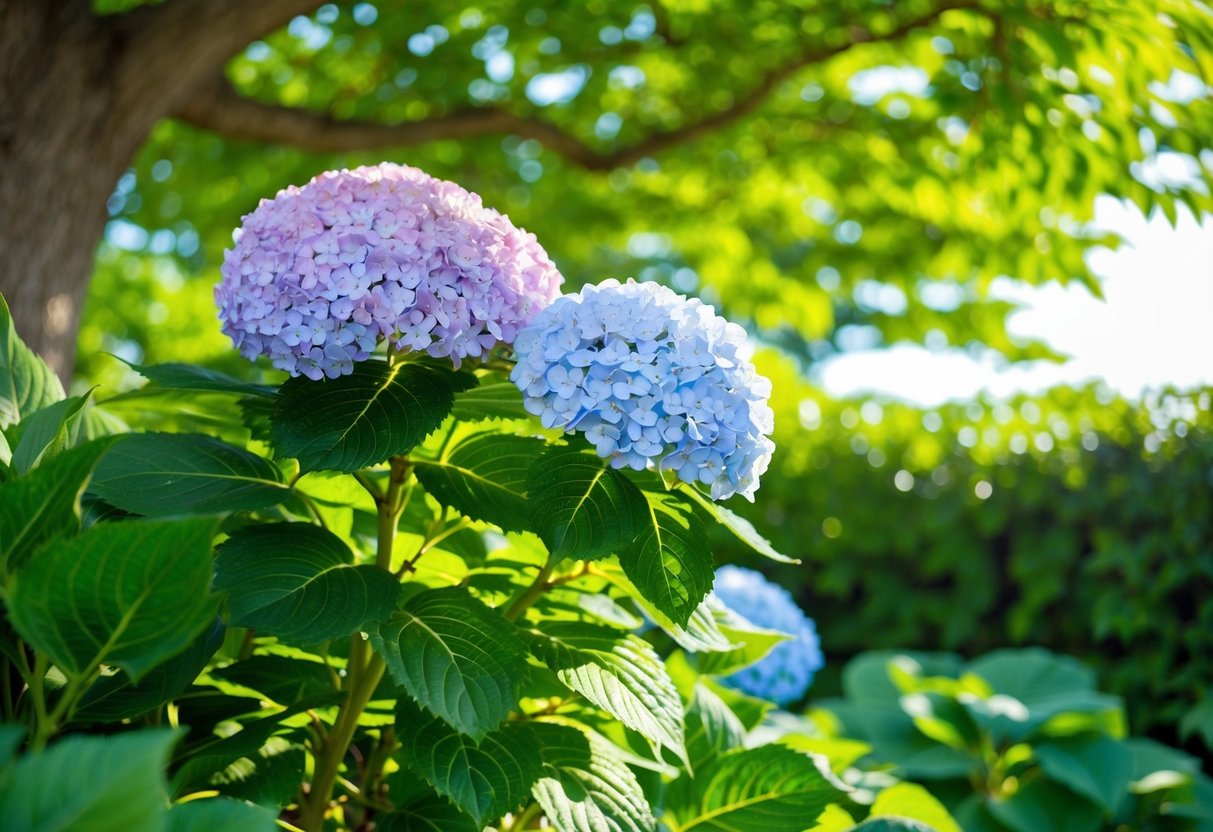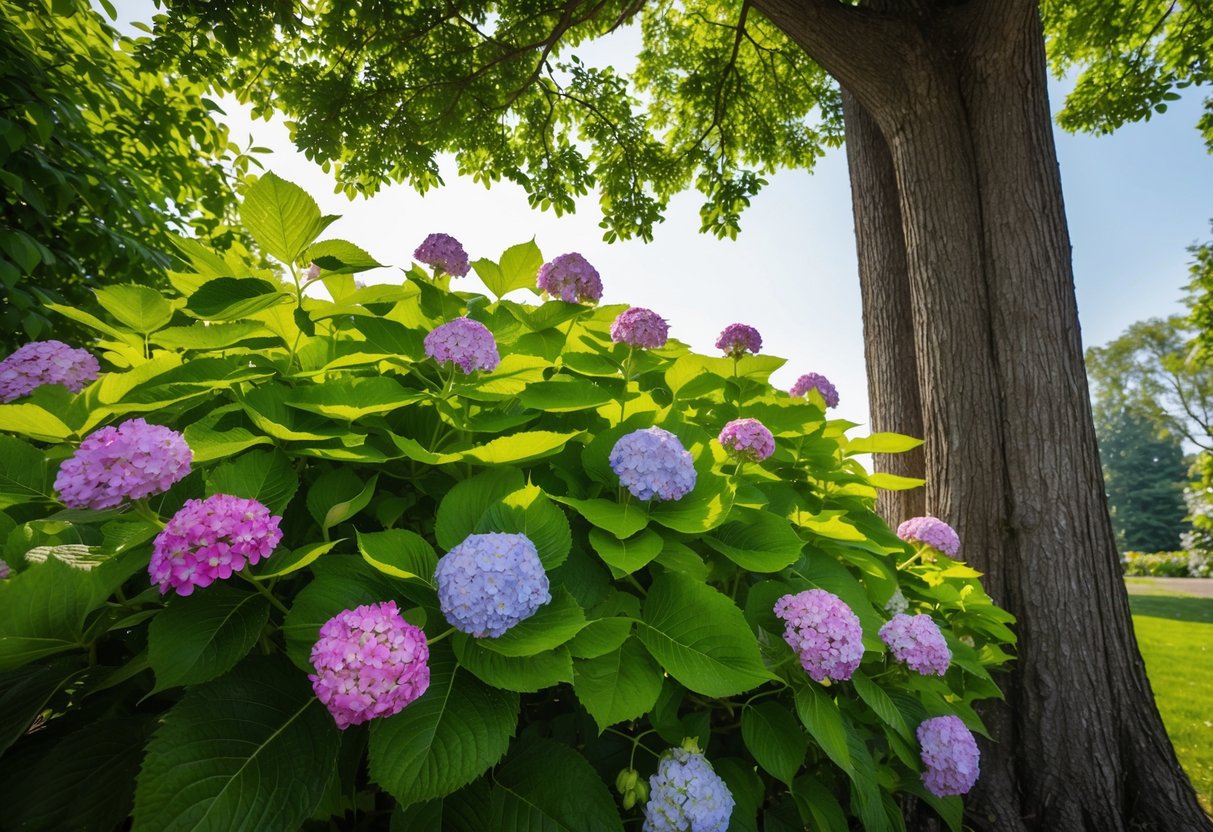Do Hydrangeas Like Sun or Shade? Discover the Perfect Spot!
Are you curious about the perfect spot for your hydrangeas? You’re in good company. These beautiful, vibrant blooms can brighten any garden, but their needs vary based on species and climate.
Most hydrangeas thrive with the gentle warmth of morning sun and seek the refreshing comfort of afternoon shade. This balance helps them grow healthy and vibrant while preventing overheating during the hottest part of the day.

While some varieties, like Hydrangea paniculata, can handle more sun, others prefer less exposure. Oakleaf hydrangeas, for example, can even tolerate full shade, standing tall in your garden with their unique foliage.
Remember, no matter what type you choose, providing them with good drainage and regular watering will set them up for success.
Choosing the right spot for your hydrangeas not only enhances their beauty but also ensures their long-lasting blooms. Imagine your garden filled with lush blossoms, each thriving in its perfect environment. Keep reading to discover more tips and tricks to master the art of planting hydrangeas in the sun or shade.
Understanding Hydrangea Preferences

Hydrangeas have specific needs when it comes to sunlight and soil conditions. Different varieties require varying sun exposure and soil pH, which can influence their bloom color and overall health.
Varieties and Sunlight Requirements
Hydrangeas thrive with the right balance of sun and shade. Most types do best with morning sun and afternoon shade.
For instance, panicle hydrangeas prefer full or partial sun. They perform well with six or more hours of sunlight daily. On the other hand, oakleaf hydrangeas manage better in partial to full shade, adapting to less direct sunlight.
The hydrangea macrophylla variety is sensitive to extremes – avoiding full sun exposure is best. It’s ideal to place these hydrangeas in spots with dappled or partial shade to prevent wilting and sunburn.
Soil pH and Hydrangea Color
The soil pH significantly affects the bloom color of hydrangeas, especially the macrophylla species. For example, acidic soils (with a pH below 6) can turn hydrangea blooms blue. Alkaline soils (pH above 7) may shift the flowers towards pink.
You can test your soil pH and adjust it to influence bloom colors. If you want blue blooms, adding aluminum sulfate can increase soil acidity. For pink flowers, lime can make the soil more alkaline.
Proper hydrangea care involves understanding and adjusting soil conditions to achieve desired bloom colors, giving your garden a personalized touch.
Planting and Initial Care

To grow healthy hydrangeas, you need to focus on their light needs and soil conditions. These beautiful plants thrive in areas with partial sun and well-draining, moisture-retentive soil.
Selecting the Right Location
Choosing the perfect spot for your hydrangeas is crucial. Most varieties prefer locations with morning sun and afternoon shade. This balance protects the plants from scorching in the midday heat.
In particular, Hydrangea paniculata enjoys partial sun but can tolerate more sunlight than others.
When planting hydrangeas, aim for a location that offers some shelter from harsh winds. This prevents damage to the delicate blooms and helps with consistent growth.
Soil Preparation and Hydrangea Planting
Preparing the right soil is essential for hydrangea care. Start by ensuring your soil is well-draining and rich in organic matter. Adding compost or peat moss to the planting area boosts nutrients and retains moisture.
Before planting hydrangeas, check that the soil remains moist but never soggy. Hydrangeas thrive in well-drained soil, so avoid clay-heavy ground, which can lead to root rot.
Dig a hole twice the width of the root ball and just as deep, ensuring the roots spread easily. Water your hydrangeas regularly to keep the soil consistently moist, especially during dry periods. Incorporate mulch to maintain soil moisture, suppress weeds, and regulate temperature.
Hydrangea Care and Maintenance

Taking care of hydrangeas involves understanding their needs in watering, pruning, and fertilizing. Ensuring the right balance in these aspects will keep your plants healthy and thriving.
Focus on their growth habits and your garden conditions for the best results.
Watering and Overwatering Concerns
Hydrangeas need consistent watering to maintain moist soil but without waterlogging. Check the soil regularly by sticking your finger about 4 inches deep. If it feels dry, it’s time to water.
Provide a deep drink about once or twice a week during the growing season.
Avoid overwatering, as it can lead to root rot. Ensure good drainage by planting hydrangeas in well-amended soil. Adding mulch around the base helps retain moisture and prevent weed growth.
Pruning Techniques
Pruning hydrangeas depends on their type. Some bloom on old wood, while others bloom on new wood. Understand which type you have to prune correctly.
For hydrangeas blooming on old wood, like bigleaf and oakleaf types, prune after flowering. Remove deadwood and shape the plant.
Those that bloom on new wood, like panicle hydrangeas, can be pruned in late winter or early spring. Deadheading, or removing spent flower heads, encourages more blooms and keeps the plant looking tidy.
Fertilization and Growth
Fertilizing hydrangeas is crucial for healthy growth. Use a balanced, slow-release fertilizer in early spring to encourage strong flower production. Apply again in summer if needed, but avoid over-fertilizing, which can harm the plant.
Monitor the hydrangea’s growth to adjust care as needed. Keep an eye on leaf color and overall vigor to determine if additional feeding is required. A healthy hydrangea should have lush, green leaves and abundant flowers.
Common Challenges and Solutions

Caring for hydrangeas includes tackling issues like pests and diseases and understanding the effects of sunlight and shade. Addressing these challenges ensures your plants remain vibrant and healthy.
Pest and Disease Management
Hydrangeas can sometimes face pests like aphids and spider mites. These small insects tend to hide on the leaves and suck out the plant’s juices.
To manage them, you can use insecticidal soap, which is effective and safe for the plant. Spray it directly on the affected areas to remove these pests.
Humidity and poor growing conditions can also lead to diseases like powdery mildew and leaf spot. These fungal problems can be reduced by ensuring good air circulation around the plants.
In some cases, you might need to use fungicides suitable for ornamental plants to treat more severe infections. Regularly check for signs of damage and take action quickly to protect your hydrangeas.
Addressing Sun Damage and Shade Issues
Hydrangeas can get sun damage if they receive too much direct sunlight, especially in the afternoon. If your plants appear wilted or have brown leaf edges, consider relocating them to a spot with more shade.
Hydrangeas generally prefer morning sun and afternoon shade. If this isn’t possible, a location with filtered shade works well too. Check the soil to ensure it isn’t too dry, as this can worsen sun damage. They thrive best in rich, well-draining soil with consistent moisture.
Overwatering should also be avoided as it can lead to root rot and other issues. Adjust the growing conditions as needed to ensure your hydrangeas flourish in your specific environment.







